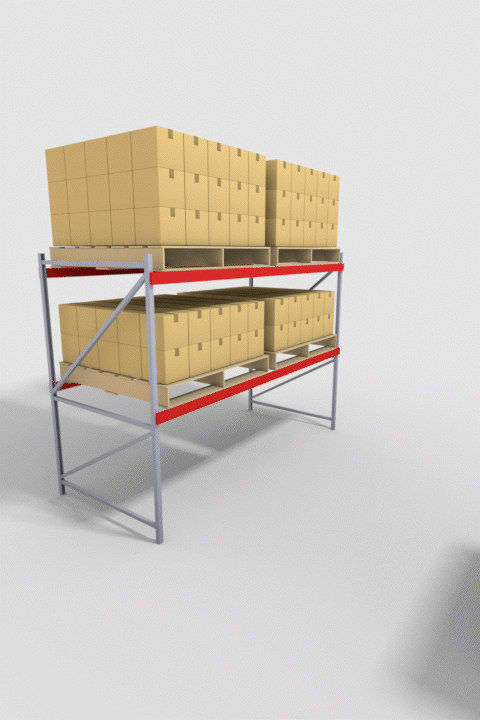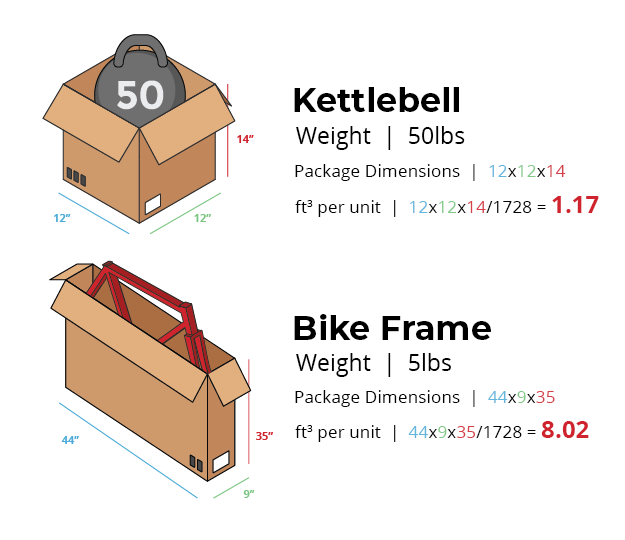RED STAG FULFILLMENT STORAGE RATE SIMPLIFIED
THE BENEFITS OF CUBIC MODEL PRICING
Red Stag Fulfillment has changed the way we price storage to help our clients have more predictable expenses and improve their ability to estimate costs. Since switching in 2021, RSF now uses a cubic foot storage model based specifically on your products’ dimensions instead of fixed storage locations.
You pay for only the physical storage space your products take up during the month.
We created this page to help existing and new customers understand our pricing model and the reason for the change. If you have questions about your specific products, reach out to your account manager or contact a Red Stag Fulfillment expert here.
THE NEW MATH
Red Stag Fulfillment’s new storage model has two straightforward characteristics:
- We calculate the amount of space each SKU takes up, measuring in cubic feet.
- Based on accurate daily counts of all your inventory, we average how much space your SKUs occupied in storage each day of the month.
RSF then applies our storage rate to the cubic-foot average for the month to calculate your cost.
There’s no more worrying about pallet size or how goods are arranged when stored, stacking, or other warehouse actions. The new cubic model is simplified, and we've found that it delivers better unit economics for your business.

YOU BENEFIT FROM A BETTER APPROACH
We have found the move to a cubic pricing model to be better for our clients’ costs, forecasts, and inventory optimization:
- Pay for only the space products use. No more worrying about how to optimally pack a pallet and use its location.
- Costs are set no matter how Red Stag configures storage. You won’t pay more if we decide to use a different layout or storage technique.
- Estimates just got easier. Daily averages instead of month-end snapshots provide increased visibility into unit costs and reliable data for forecasts.
- Same great service. As we make the shift, you and your customers will experience no operational changes. That means business as usual, all backed by some of the best guarantees in the industry.
SEEING IS BELIEVING:
A CUBIC PRICING MODEL EXAMPLE
Though the cubic pricing model is becoming more popular in our industry — examples include Fulfillment by Amazon and Deliverr — it may be new to you and your business. Below is an illustrated example to help you see what the cubic pricing model looks like and how it can help you understand and predict your monthly costs.
***Note: This example uses a simplified rate for illustrative purposes. It does not represent pricing or rates for your products.
PRODUCT DIMENSIONS
The Big Exercise brand sells two SKUs that ship via Red Stag Fulfillment. They’re a 50 lbs. kettlebell and an aluminum bicycle frame. Big Exercise ships each of these SKUs to us in their own packaging, and we use the dimensions of that packaging to calculate how much space it takes up in our warehouse. These packaging dimensions are used for storage estimates even if products are placed inside a larger box for order fulfillment.
Weight is never considered in this cubic model.
To calculate the cubic feet of each product, we first find the volume of each product. To do that, multiply length x width x height. Because product dimensions are measured in inches, we need to divide that by 1728 (the number of cubic inches in a cubic foot).

AVERAGE DAILY INVENTORY COUNTS
Big Exercise sells a few of these SKUs each day and tends to restock in the middle of the month. Let’s look at their inventory during an average month.
To find the daily average inventory count for the month, add up the number of units in storage each day and divide them by the number of days in the month.
For the kettlebell, that is a total of 3,060 units, divided by 31 days. This gives Big Exercise 98.71 as the average number of daily units in storage for the month.
For the bicycle frame, we'll use a total of 2,325 units, divided by 31 days. This gives Big Exercise 75 as the average number of daily units in storage for the month.
We now know the average daily inventory count for each SKU for the billing month.
PUTTING IT ALL TOGETHER
For Big Exercise to arrive at the storage cost for our sample month, multiply the cubic feet per unit x average number of daily units in storage x sample storage rate. For our example, we’ll use $1 for the sample storage rate.
For the kettlebell, that is: 98.71 units x 1.17 cubic feet per unit x $1 per cubic foot rate = $115.49 monthly storage cost.
For the bicycle frame, that is: 75 units x 8.02 cubic feet per unit x $1 per cubic foot rate = $601.50 monthly storage cost.
Big Exercise can calculate its entire storage cost for the month by simply adding the $115.49 for the kettlebell and $601.50 for the bicycle frames. They get a total storage cost of $716.99 for the sample month. Cubic model pricing is that simple.
As an added benefit, Red Stag Fulfillment tracks these details for you throughout the month. That allows us to automate these calculations and reduce human error while making it easy for you and your account manager to verify all charges.
CALCULATE YOUR MONTHLY RATE
Our clients can work directly with their Account Managers to get help calculating their monthly rate under our cubic model pricing. Together, you’ll add dimensions for each SKU, look at historical data to create an estimate for your monthly product count, and get your specific cubic model pricing rate.
For potential customers looking to learn more, please contact Red Stag’s experts to get a custom estimate based on your products and average order volume. See how simple your storage costs can be when you switch to our cubic pricing model.

